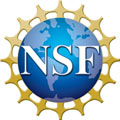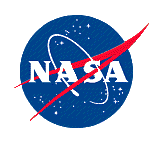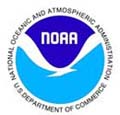This Ocean Carbon & Biogeochemistry (OCB) Scoping Workshop focused on the implementation of a long-term observing system for marine biogeochemistry using chemical and biological sensors deployed on autonomous platforms, such as profiling floats, gliders or other long-endurance autonomous vehicles. Several chemical and biological sensors can now be deployed for months to years in the ocean on floats and gliders. These systems are becoming sufficiently affordable that it is possible to envision biogeochemical sensor networks with hundreds of nodes or more, similar to the current Argo network of 3000 floats. This will allow the development of basin-scale and, ultimately, global-scale observing systems. These sensor networks will permit ocean scientists to quantitatively observe fundamental biogeochemical processes such as rates of nutrient supply, net community production, physical controls on bloom development (e.g. the Sverdrup Hypothesis), dynamics of oxygen minimum zones and their impacts on denitrification, and carbon export throughout the ocean with a level of detail hitherto impossible. The spatial and temporal responses of these processes to climate oscillations and greenhouse gas forcing will be observed with a resolution that is simply not possible when observations are limited to ships. An integrated observing system that combines in situ sensors deployed on long endurance platforms with satellite sensors and data-assimilating, biogeochemical-ecological models would provide previously unachievable constraints on the carbon cycle and its sensitivity to a changing climate. It would transform ocean biogeochemistry.
These capabilities are developing rapidly but they are not yet widely appreciated by the ocean science community. This Scoping Workshop had four specific goals: 1) to provide carbon cycle scientists with a critical review of currently existing technologies, their strengths, their weaknesses, and expected developments, 2) to identify problems that can only be solved with these types of observations over several years and to then discuss experiments that could be implemented in the near-term to address these topics, 3) to outline the requirements for a long-term observing system based on in situ sensors, satellites and data-assimilating models to monitor biogeochemical processes on a global scale, and 4) to identify factors limiting development of proven sensors and unmet technical developments required to expand our capability to an integrated observing system.
Facilities at MBARI limited the meeting size to approximately 60 participants. The steering committee strove to achieve a balance among participants from the observational carbon cycle community, biogeochemical modeling community, scientists and engineers developing sensors or platforms for long-term, autonomous observations and representatives of large programs and funding agencies.
This Ocean Carbon and Biogeochemistry (OCB) Scoping Workshop focused on the implementation of a long-term observing system for marine biogeochemistry using chemical and biological sensors deployed on autonomous platforms, such as profiling floats, gliders or other long-endurance autonomous vehicles. Several chemical and biological sensors can now be deployed for months to years in the ocean on floats and gliders. These systems are becoming sufficiently affordable that it is possible to envision biogeochemical sensor networks with hundreds of nodes or more, similar to the current Argo network of 3000 floats. This will allow the development of basin-scale and, ultimately, global-scale observing systems. These sensor networks will permit ocean scientists to quantitatively observe fundamental biogeochemical processes such as rates of nutrient supply, net community production, physical controls on bloom development (e.g. the Sverdrup Hypothesis), dynamics of oxygen minimum zones and their impacts on denitrification, and carbon export throughout the ocean with a level of detail hitherto impossible. The spatial and temporal responses of these processes to climate oscillations and greenhouse gas forcing will be observed with a resolution that is simply not possible when observations are limited to ships. An integrated observing system that combines in situ sensors deployed on long endurance platforms with satellite sensors and data-assimilating, biogeochemical-ecological models would provide previously unachievable constraints on the carbon cycle and its sensitivity to a changing climate. It would transform ocean biogeochemistry.
These capabilities are developing rapidly but they are not yet widely appreciated by the ocean science community. This Scoping Workshop had four specific goals: 1) to provide carbon cycle scientists with a critical review of currently existing technologies, their strengths, their weaknesses, and expected developments, 2) to identify problems that can only be solved with these types of observations over several years and to then discuss experiments that could be implemented in the near-term to address these topics, 3) to outline the requirements for a long-term observing system based on in situ sensors, satellites and data-assimilating models to monitor biogeochemical processes on a global scale, and 4) to identify factors limiting development of proven sensors and unmet technical developments required to expand our capability to an integrated observing system.
Facilities at MBARI limited the meeting size to approximately 60 participants. The steering committee strove to achieve a balance among participants from the observational carbon cycle community, biogeochemical modeling community, scientists and engineers developing sensors or platforms for long-term, autonomous observations and representatives of large programs and funding agencies.
Workshop Steering Committee
Kenneth Johnson, MBARI
Steve Emerson, University of Washington
Steve Riser, University of Washington
Mary Jane Perry, University of Maine
Emmanuel Boss, University of Maine
Arne Kortzinger, University of Kiel, Germany
Niki Gruber, Swiss Federal Institute of Technology, Zurich
Hervé Claustre, Universite Pierre et Marie Curie
Dennis Hansell, University of Miami
Related Publications
Bishop, J. K. B., and T. J. Wood (2009), Year-round observations of carbon biomass and flux variability in the Southern Ocean, Global Biogeochem. Cycles, 23, GB2019, doi:10.1029/2008GB003206.
Bishop, J.K.B., R.E. Davis, and J.T. Sherman. 2002. Robotic observations of dust storm enhancement of carbon biomass in the North Pacific. Science 298: 817-821.
Bishop, J.K.B., T.J. Wood, R.E. Davis, and J.T. Sherman. 2004. Robotic observations of enhanced carbon biomass and export at 55S. Science 304: 417-420.
Boss, E., M. J. Perry, D. Swift, L. Taylor, P. Brickley, J. R. Zaneveld and S. Riser. 2008a. Three years of ocean data from a bio-optical profiling float. Eos: 89, No. 2, 209-210.
Boss, E., D. Swift, L. Taylor, P. Brickley, R. Zaneveld, S. Riser, M.J. Perry and P. G. Strutton. 2008b. Observations of pigment and particle distributions in the Western North Atlantic from an autonomous float and ocean color satellite. Limnology and Oceanography: 53, 2112-2122.
Gruber, N., S. C. Doney, S. R. Emerson, D. Gilbert, T. Kobayashi, A. Körtzinger, G. C. Johnson, K. S. Johnson, S. C. Riser, and O. Ulloa. 2006. The Argo-Oxygen program: A white paper to promote the addition of oxygen sensors to the international Argo float program. http://www-argo.ucsd.edu/o2_white_paper_web.pdf.
Guay, C. K. H. and J. K. B. Bishop. 2002. A rapid birefringence method for measuring suspended CaCO3 concentrations in seawater. Deep-Sea Research I: 49, 197-210.
Johnson, K. S., and L. J. Coletti. 2002. In situ ultraviolet spectrophotometry for high resolution and long term monitoring of nitrate, bromide and bisulfide in the ocean. Deep-Sea Research I 49: 1291-1305.
Johnson, K. S., J. A. Needoba, S. C. Riser, and W. J. Showers. 2007. Chemical sensor networks for the aquatic environment. Chemical Reviews: 107, 623-640, doi 10.1021/cr050354e.
Johnson, K.S., W.M. Berelson, E.S. Boss, Z. Chase, H. Claustre, S.R. Emerson, N. Gruber, A. Kortzinger, M.J. Perry and S.C. Riser. 2009. Observing biogeochemical sycles at global scales with profiling floats and gliders: Prospects for a global array. Oceanography: 22(3): 216-225.
Körtzinger, A., J. Schimanski, U. Send, and D. Wallace. 2004. The ocean takes a deep breath. Science: 306, 1337.
Körtzinger, A., J. Schimanski, and U. Send. 2005. High quality oxygen measurements from profiling floats: a promising new technique. Journal of Atmospheric and Oceanic Technology: 22, 302-308.
Martz, T. R, K. S. Johnson and S. C. Riser. 2008. Ocean metabolism observed with oxygen sensors on profiling floats in the Pacific. Limnology and Oceanography: 53, 2094-2111.
Mitchell, B.G., M. Kahru, and J. Sherman. 2000. Autonomous temperature-irradiance profiler resolves the spring bloom in the Sea of Japan. Proceedings, Ocean Optics XV, Monaco, October 2000.
Nicholson, D., S. Emerson and C. Erickson. 2008. Sub mixed-layer oxygen production determined from Seaglider surveys. Limnology and Oceanography: 53, 2226-2236.
Niewiadomska, K., H. Claustre, L. Prieur, F. d'Ortenzio. 2008. Submesoscale physical-biogeochemical coupling across the Ligurian current (northwestern Mediterranean) using a bio-optical glider. Limnology and Oceanography: 53, 2210-2225.
Perry, M. J., B. S. Sackmann, C. C. Eriksen and C. M. Lee. 2008. Seaglider observations of blooms and subsurface chlorophyll maxima off the Washington coast, USA. Limnology and Oceanography: 53, 2169-2179.
Riser, S. C. and K. S. Johnson. 2008. Net production of oxygen in the subtropical ocean. Nature: 451, 323-325.
Sackmann, B.S. 2007. Remote assessment of 4-D phytoplankton distributions off the Washington coast. Ph.D. dissertation, University of Maine (USA), 221 pp.
Related Files
Related Links







